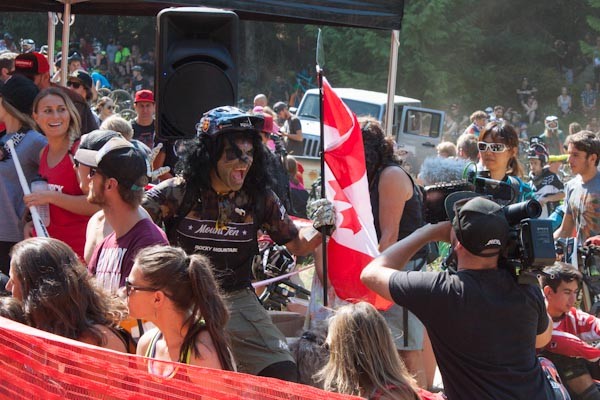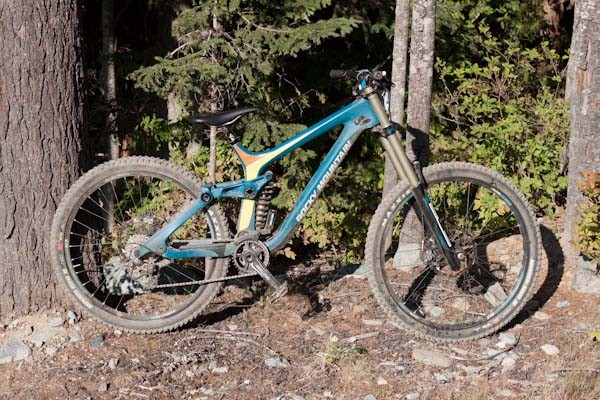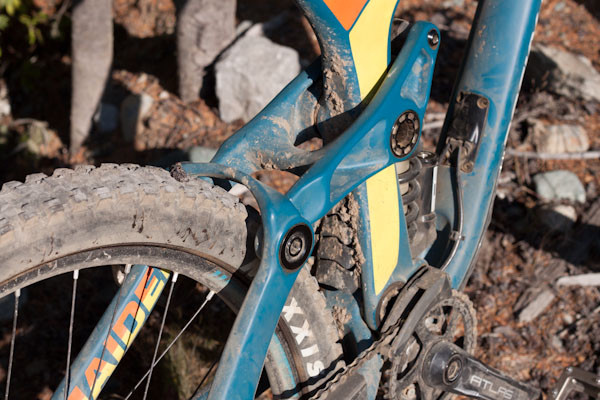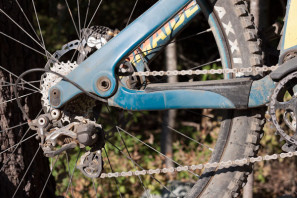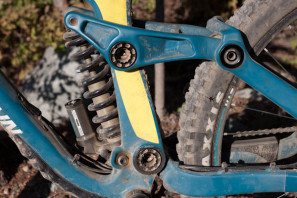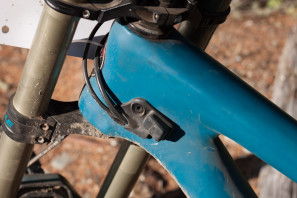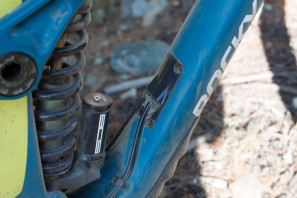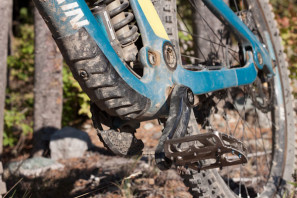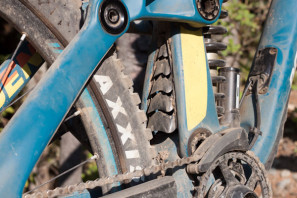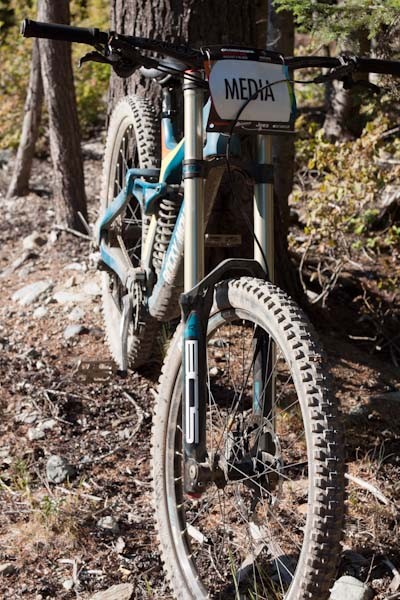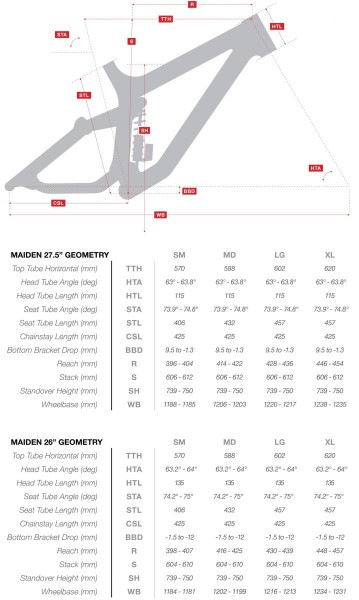It’s been a long time in the works, but the new Rocky Mountain Maiden is finally ready to take center stage. The Maiden rides with the stability of a much bulkier bike without the weight, gracefully tapping the trail like Kirk Hammet’s fingers on a fretboard.
I only had the opportunity to take a few runs in the Whistler Bike Park on the Maiden, but I did my best to turn it up to 11. It was enough to assure me that the bike would be a very fun choice for those who like a mix of downhill mashing and bike park shredding…
The Maiden underwent four years of development, and almost 30 prototype phases before the design was finalized. Rocky designed the Maiden to provide a shock rate curve they felt most riders would be able to take full advantage of. Overall it’s a moderately rising rate, but ramps up sharply for when things get loud.
Offering a full 200mm of travel, the frame is full carbon including the rocker link. The frame boasts some beefy tubing up front and a very shapely rear end, and a substantial looking rocker. The Maiden features a press fit BB107 bottom bracket, tapered head tube and 157mm rear end spacing, and has ISCG05 chain mounts.
For those who still like 26” wheels or who recently invested in a nice set of suddenly ‘dated’ hoops, throw up your horns, ‘cause the Maiden will rock out with either 26 or 27.5” wheels. By using a flip chip at the shock, two axle mount points at the rear and a spacer under the head tube (for 26”) the Maiden remains quite similar despite your chosen wheel size. The Four Bar Smoothlink suspension acts almost the same regardless, the head tube angle adjusts by 0.2 degrees, and the chainstay length doesn’t change.
The bike gets a little metal in its main pivots. Both feature collet style pivots with BB30 enduro bearings for a super stiff and durable connection to the frame. The Maiden has smoothly incorporated internal brake and shifter cable routing with built-in stanchion stoppers at the top ports, and its Di2 compatible if you wanna go AC/DC. The frame has some cleverly integrated frame protection, including a vented shock fender to aid in shock cooling, a guard on the lower down tube, and a nice thick chain stay protector.
Before hopping aboard the Maiden, I got the rundown on what to expect from the bike. In short, I was told the suspension should ramp up to provide good bottom out protection but still be relatively plush initially. Braking should prove to be responsive, as the Maiden apparently resists squatting and keeps the rear wheel planted. They also mentioned the front ends fit a bit on the shorter side.
I hopped aboard a medium frame, which is my usual size, and it was long enough for me. The Maiden’s back end definitely felt short and lively, and it was a pleasure to flick the bike around tight corners. On the other hand the stiffness made it easy to straight line through rough patches of rocks or roots. Suspension wise the Maiden doesn’t offer the most sensitive feel in the back, but when you turned it up a little it absorbed rock gardens quite easily without resorting to full travel as Rocky suggested. Stopping also proved to be pretty smooth and responsive.
Overall the Maiden felt like a race rig up front with a freeride/park bike rear. Rocky Mountain seems to have created a well-rounded gravity bike that I wouldn’t hesitate to charge down anything I could find, yet it maintains a playful feel and bounces around with minimal effort making for a very fun park ride.
The 2016 Rocky Mountain Maiden will be available in S/M/L/XL sizes at the end of October. There are four models, starting with the Park at $4499 in the blue color scheme seen here. The Pro model comes in black and goes for $5499, the World Cup wears blue and sells for $6999 and the decked-out Unlimited model fades to black and costs $10,499. Check out Rocky Mountain’s website for more info and full build specs.
